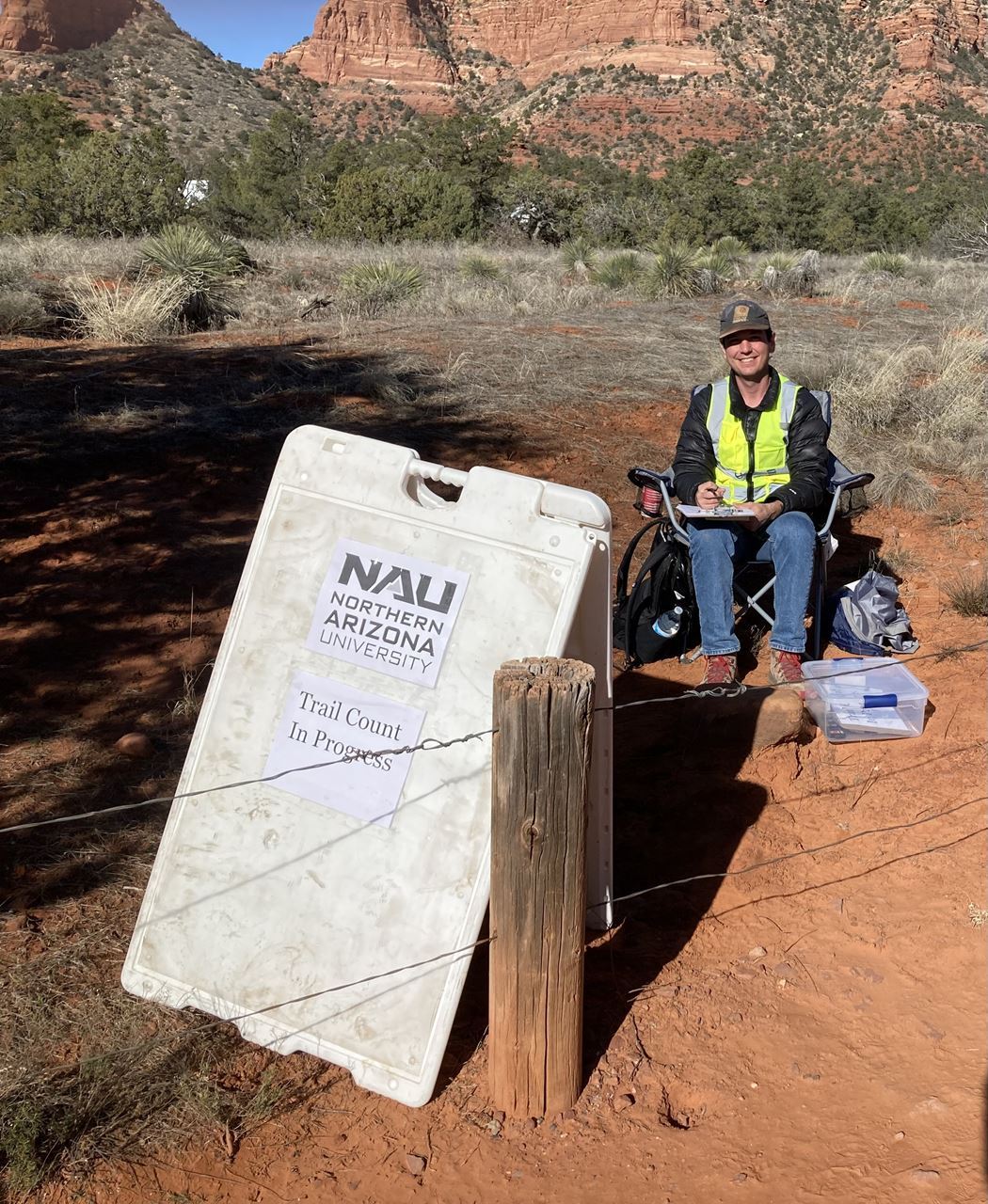 An intensive trail census has just been completed for the Red Rock Ranger District. Since the last survey in 2015, trail use has increased more than 27% to approximately 2.2 million users yearly – including hikers, bikers, and equestrians. And for our pet lovers, the review shows that 111,190 dogs romp along the trails each year.
An intensive trail census has just been completed for the Red Rock Ranger District. Since the last survey in 2015, trail use has increased more than 27% to approximately 2.2 million users yearly – including hikers, bikers, and equestrians. And for our pet lovers, the review shows that 111,190 dogs romp along the trails each year.
The study was completed by Northern Arizona University graduate student Hayden Jorde, as a masters degree thesis project, and funded by the Sedona Red Rock Trail Fund. Coupled with a recently completed trail maintenance survey, these efforts will help identify and prioritize longer term project and resource needs for developing and maintaining the Sedona area trail systems.
Caption to photo: NAU graduate student Hayden Jorde recently completed a comprehensive census of the Sedona Red Rock trails. The findings from this census along with other recent studies will help identify and prioritize longer term project and resource needs for developing and maintaining the Sedona area trail system.
The project spanned nearly a year, and started with a thorough review of results from the previous survey of 2015. From there, Mr. Jorde researched the latest methods and trends in counting users to develop a data creation system which included combining existing US Forest Service traffic counters and on-the-trail volunteers collecting user counts. These numbers were then analyzed and combined using computer algorithms to create a fuller picture of the actual trail use.
After interviewing long-time users and user groups, a representative list of high, moderate and low use trails nearest Sedona and the Village of Oak Creek was created that encompassed approximately 200 of the district’s 400+ miles of system trails. Several of these are considered Wilderness Trails. This step allowed more efficient data collection. A subset of the identified trails was then visited for collection eight hours for one weekday and one weekend day, with the numbers then appropriately extrapolated given other factors such as seasonal use patterns. Our local Friends of the Forest volunteers were key to collecting this data.
The seasonal nature of our trails was confirmed, with March and April being the highest use periods, followed closely by September and October. It was no surprise that July and August months have the fewest visitors. The trends in this area of the review aligned pretty well with the 2015 report.
The most used trails are Cathedral, Boynton, West Fork and Bell Rock Pathway – in that order. This differs from 2015, which recorded Bell Rock Pathway as the highest, followed by Cathedral, West Fork and Devil’s Bridge.
The data in this latest review shows a slightly higher percentage of hikers to mountain bikers than in the past. The average group size was 2.4 users, and the most used time period to start their adventures was a 9-10 AM arrival.
For the first time, the project counted our four-footed friends that accompany their humans. More than 111,000 dogs were recorded! There was no comparative data from the 2015 study, but it is evident there are many paws on the trail. Volunteers did not count any cats, by the way.
After considering these findings, some very interesting questions have arisen regarding the trails. These include statistics on how far from the trailhead visitors actually go, how many users string together different trails in one trip, how many repeat visitors, etc. A future project may be in the works to answer these and other questions.
